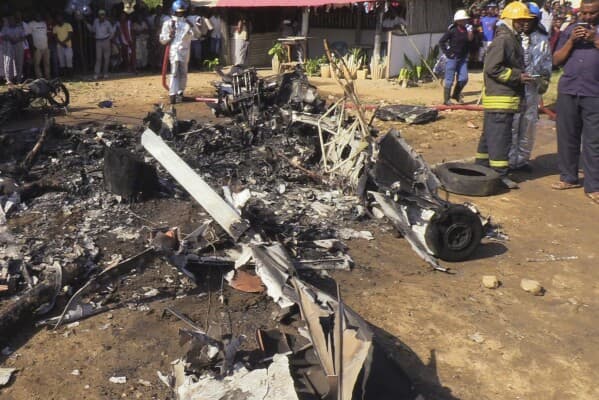Loading News Article...
We're loading the full news article for you. This includes the article content, images, author information, and related articles.
We're loading the full news article for you. This includes the article content, images, author information, and related articles.
After several fatal crashes, aviation experts say Kenya air disasters stem from human error, lax oversight and unpredictable weather rather than mechanical failures; they urge stricter maintenance and regulatory enforcement

Nairobi, Kenya – A wave of fatal air accidents in Kenya and across Africa is raising urgent questions about aviation safety, with experts warning that the tragedies point to systemic weaknesses rather than mechanical flaws.
In recent weeks, an AMREF Flying Doctors aircraft crashed in Nairobi’s Mwihoko area, killing six people, while a Kenya Air Force plane went down in Kwale County, claiming two lives. On January 30, another light aircraft crashed at Kedong Ranch in Naivasha, adding to the growing toll.
Aviation consultant Godwin Ike told Deutsche Welle that modern aircraft are engineered with multiple redundancies and fault-warning systems designed to prevent disasters. “Airplanes rarely just fall from the sky,” he said. “Negligence, delayed maintenance, or poor judgment in the cockpit are often the real culprits.”
Ike stressed that airlines must ground planes when maintenance is due, and regulators must enforce timely inspections without compromise. “Every warning light, every fault code is a call to action, not an option,” he added.
Experts also highlighted that climate change is intensifying weather risks. Felicity Ahafianyo, head of Ghana’s Central Analysis and Forecast Office, noted that pilots are increasingly contending with violent thunderstorms, wind shear, and clear-air turbulence that are harder to predict and more dangerous than before.
“These are not isolated anomalies – they are becoming part of our flying environment,” she warned, calling for investment in modern weather forecasting tools and improved pilot training to adapt to shifting conditions.
Beyond weather, analysts argue that regulatory failures remain Africa’s Achilles’ heel. Many civil aviation authorities, including in Kenya, struggle with limited budgets, inconsistent enforcement of international standards, and insufficient training resources. The high cost of spare parts often leads to corner-cutting, with some operators tempted to fly aircraft longer than recommended.
“Rules exist on paper, but unless regulators enforce them consistently, accidents will keep happening,” Ike observed.
Kenya’s skies are busier than ever, with Nairobi positioning itself as an aviation hub for East Africa. Yet experts warn that growth has outpaced safety infrastructure, leaving both private operators and government agencies struggling to keep up.
The recent crashes have reignited debate about whether authorities are doing enough to ensure that rapid expansion does not compromise passenger safety.
Analysts agree that restoring trust requires more than technical fixes. It demands a cultural shift where safety is prioritised above profits and politics. That means regulators enforcing rules without fear or favor, airlines grounding planes when alerts are raised, and governments funding aviation safety as a national priority.
“Every accident chips away at public confidence,” one aviation safety expert told this reporter. “The lesson is clear: Kenya and Africa at large must build a culture where safety is non-negotiable.”
Keep the conversation in one place—threads here stay linked to the story and in the forums.
Other hot threads
E-sports and Gaming Community in Kenya
Active 6 months ago
Popular Recreational Activities Across Counties
Active 6 months ago
Investing in Youth Sports Development Programs
Active 6 months ago
The Role of Technology in Modern Agriculture (AgriTech)
Active 6 months ago